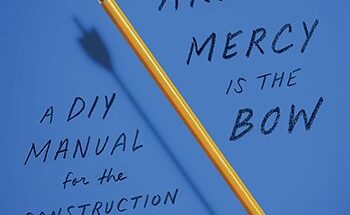
“#ds139 ‘Writer’s Block'” by Sharon Drummond is licensed under CC BY-NC-SA 2.0.
In December of last year, I attended the Massachusetts Conference for Women on behalf of my day job. There were dozens of wonderful speakers that gave me a lot to think about when it comes to leadership and career planning. But only one speaker – Lee Hartley Carter – left me with a new insight on emotion that I could also apply to writing novels.
Carter is the author of Persuasion and has built her career around an approach to political communication strategy that focuses on voters’ underlying emotional responses to the issues. During a panel on Building Influence, she told the crowd of current and aspiring leaders that there are three emotions that prevent people from taking action: anxiety, shame, and guilt. She advised the room to be careful not to evoke one of the three negative feelings in our staff or prospective clients. If you are creating anxiety, shame, or guilt, you will have employees who can’t finish projects or potential buyers who will never buy from you.
“Fear – a worry about a known or direct threat – is motivating,” she clarified. Adding that of course fear wasn’t an ideal way to inspire people to take action, just effective. “But anxiety, a generalized worry that goes unnamed, will inhibit someone from taking action.”
Her advice got me thinking about crucibles. That moment in a novel when a character seems trapped and must face something difficult to grow or change and move through their story. Often in early drafts, it’s easy to get stuck at the place when your character is lost in a dark or difficult emotion and wonder which is the right, but not too contrived, push forward. My theory is you can look for any one of Carter’s inhibitory emotions and guide a character into action.
Take anxiety and Guy Montag of Fahrenheit 451. Initially, he has some vague anxiety that something is wrong with the dystopian world he’s living in. But even though burning books makes him uneasy, he doesn’t have enough information to understand exactly what’s wrong with his fireman day job. Enter neighbor Clarisse, who fills him in on some specific values of free-thinking and literacy. Next, his wife’s overdose brings the consequence of oblivion into sharp focus. Now he has enough concrete dread to begin an investigation that ultimately leads to him taking risks to read and run away from a very real and frightening Mechanical Hound. The moral of the story: Take any of your nervous or melancholy characters and give them something real to be afraid of.
Next up, shame and Hester Prynne of The Scarlett Letter. Shame results when a set of external societal norms is internalized and then those rules are broken. If the resulting taboo is believed to be a permanent characteristic and fully internalized, a debilitating existential crisis will follow. In Hester Prynne’s case, her affair and resulting daughter mark her as an immoral, disloyal women by Puritan law. She serves her shameful moment in the stocks. But the novel does not devolve into permanent loss of self. Instead, Hester rejects some of the imposed rules of the Puritanical town and adheres to her own moral code, a loyalty to loved ones. The way to tackle shame spirals is to have your character reject some of the external norms and assert their core internal values.
Finally there’s guilt. Unlike shame, guilt is not the thought, “I am bad” but simply the thought “I caused bad.” Guilt is an inhibitory emotion because a character who’s taken action and got a bad outcome (true or false equilvalency) will believe future actions will also get negative outcomes. If they truly believe, “I always cause bad”; you the author are stuck. They’ll lose faith in taking action all together. But if their guilt turns to resolve, you have a plot. “I caused bad and now must resolve the outcome to good.” For example, Jean Valjean of Les Miserables only takes up his manic crusade of good deeds from feeding the poor and taking in an orphan after the weight of his guilt over the betrayal of Bishop Myriel’ trust. Driven by guilt and resolve he continues to risk arrest in order to do more good deeds. Beware of guilt and doubt. Give your characters some guilt and resolve instead and they’ll be taking action in no time.
Does this framework hold up? I’d love hear other examples or emotional jags your characters find themselves in.




2 comments